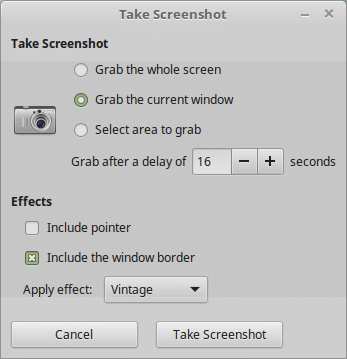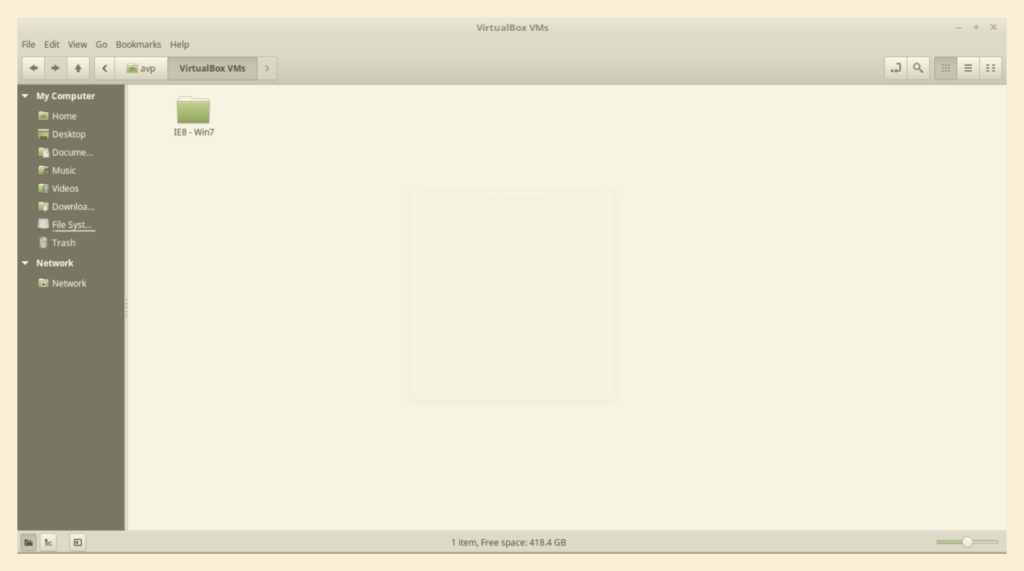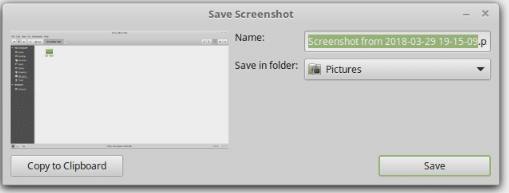The default screenshot tool in Linux Mint is a handy to use for taking simple screenshots. It can take screenshots of specific windows, selective regions as well as delayed captures.
It is available from Menu > Accessories > Screenshot.

The interface basically has two main sections – one for taking screenshots and the other for effects.
To take a screenshot of a window, screen or an area, choose the required option. If the capture needs to be taken after a while, change the time interval as needed.

If the screenshots require a pointer, enable that option. Effects will be applicable only for screenshots of current/active window. The effects available are Vintage, Drop shadow, Border and None. An example of Vintage effect applied is below.

The default path for screenshots is in the user/Pictures folder but can be saved to any other location too. Also, the screenshots can be renamed as needed. They can be copied to clipboard too for using in other programs.

For basic screenshot tasks, this default tool is a useful one. For more advanced functions, Shutter can be handy.
Do try it out.

Actually I don’t make comments on every post I visit. Just wish to say your article is as surprising. Must say it is such a nice post. I used to be checking continuously this blog and I’m inspired! Extremely helpful info particularly the final phase 🙂 I care for such information a lot. I was seeking this certain info for a very long time. Thanks and best of luck for your future work.
Linux is for geeks & nerds who want to work, or used to work in IoT & server industries. Most Applications for “normal” people are written for the most popular operating systems: Windows, Apple & Android. Personally I am waiting for Linux to “grow up”. Linux needs to develop Wyland, Snap & Flatpak. Linux”s BTRFS promises much, but still is not reliable enough, it seems. Then there are to be developed lots of smooth, easy utilities for the Linux architecture to become more popular han at the moment. The other Linux barrier is Android”s use of a very old, primitive version of Linux. If only Microsoft could drop its 8-bit operating system, and follow Apple and others towards the Unix-derived operating systems.